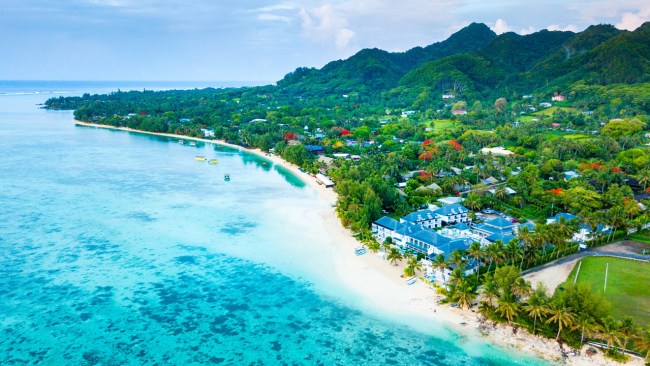Jess Adamson: Kimberley Coast is Australia’s most extraordinary, isolated spot
It’s an untouched part of Australia most of us never go. No internet, no phone coverage – but you’ll come back changed, writes Jess Adamson.
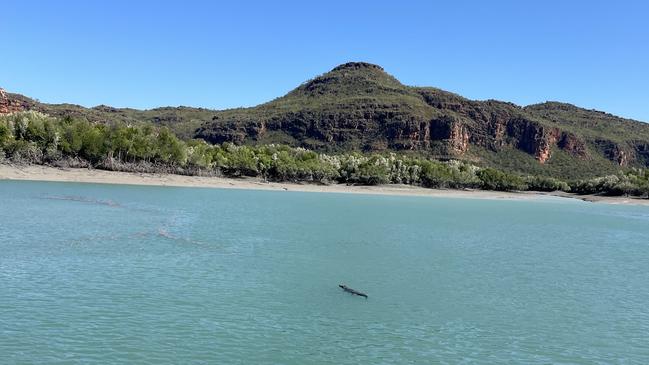
Lifestyle
Don't miss out on the headlines from Lifestyle. Followed categories will be added to My News.
I’ve just turned my phone off for the first time in more than 25 years. No world news, radio, TV, no emails, calls, messages or Google for a week. And it was excellent.
Ever since I was a young reporter, my phone has been an extension of my body. I’ve slept within arm’s reach of it every night just in case the call came through that I needed to be somewhere fast.
Now I never leave home without it. I check it for work emails, messages and the news of the day. It’s a habit I wish I could shake and I know I’m not alone. It’s difficult to switch off when the phone is always on.
But 18 months ago, we started planning a holiday to Western Australia’s remote Kimberley Coast. Twelve friends with a sense of adventure, a love of fishing and a desire to explore this stunning part of Australia while we’re fit and able. We arrived home at the weekend, exhilarated by the experience.

The lack of phone range was an absolute highlight of the trip. We were totally off the grid, apart from a satellite phone for emergencies and one or two passes of a tower built for pearlers and mining communities. But by then we’d all but forgotten about our devices.
All 12 of us are fanatical Crows fans and yet we missed one of the biggest stories in the club’s history – THAT goal that was wrongly called as a point. It was probably for the best we didn’t know about it, as it may have dampened our spirits.
My senses soared as we explored the rugged wilderness of the Kimberley by boat. It is a sacred and spiritual place that now has my heart.
I’m passionate about South Australia’s regions and tourism spots but there was something very powerful about getting back to nature on this trip, with no digital distractions.
For eight days, we immersed ourselves in the most magnificent, diverse and untouched country I’ve ever seen in my life. And not a single phone rang to take our focus away.
We listened, learned and laughed a lot.
We swam in freshwater pools and at white, sandy beaches and felt like we were the only ones on earth. We used hammers and chisels to shuck oysters straight from the rocks.

We climbed rocky waterfalls, cooked on beach bonfires and lay on our backs, gazing up at ancient Aboriginal paintings of snakes and spirits in the glowing red sandstone.
We whizzed through the tidal trap of Horizontal Falls where my hat flew off into the whirlpools and was gone in less than 30 seconds.
We fished almost every day, hauling in the fruits of the Kimberley’s thriving mangrove creeks and waterways – shimmering silver finger mark, mangrove jack, queenfish and blue-nosed salmon.
The sparkling turquoise water is teaming with wildlife. We saw dozens of humpback whales and their calves, stingrays, tiger and tawny nurse sharks, green and loggerhead turtles, flame fiddler crabs and shoals of stunning tropical fish.
We caught dozens of brown mud crabs in the dark and shady mangroves and ate green ants fresh from the tree – a surprising explosion on our tongues, like a tiny sherbet bomb.
The Kimberley is not for the faint-hearted; it’s crocodile country and we saw them near and around us every day. They are clever and calculating. Their bulgy eyes, just above the surface, lock on to their target before they go under the water and emerge when it’s too late for their unsuspecting prey to react. These prehistoric creatures know exactly what they’re doing. They’ve survived, unchanged, for 65 million years.
At Butterfly Gorge we passed a crocodile with a wide toothy grin, basking in the sun on a rock ledge, his steely gaze fixed on us. Minutes later we were swimming in a freshwater pool above him. It was safe but I felt like we were in an episode of Survivor.
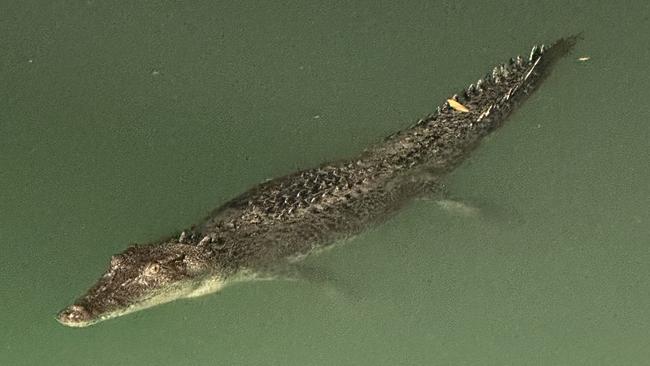
The Kimberley Coast is not a place to take risks. Stories of those who didn’t make it out played over and over in our minds.
Like the glamorous young model and boat stewardess Ginger Meadows who died in 1987 at Kings Cascade. She was waist deep in water when the croc moved in. Backed up against the rock wall, she panicked and tried to swim for it. It took her down in a death roll and brought her up again, right in front of her friend. They found her body in the mangroves two days later, her torso perfectly intact but with no arms.
I snapped a photo of my smiling friends on our way to a fishing expedition. When we looked at the picture, there was a large shark fin protruding from the water just behind them.
What makes the Kimberley so different to anything I’ve ever seen is the tides. They are some of the biggest in the world, sometimes more than 10m high.
Twice a day, as the tide drops, the 400sq km Montgomery Reef appears to rise miraculously out of the sea with torrents of water cascading over its rim.
Marine life is forced from the reef platform into the channel but osprey, egrets and sea eagles feast on the bounty of fish and crustaceans trapped in the shallows. A deadly sea snake passes us, navigating its way through the rapid whirlpools. As it slides away, it’s hard not to admire its striking stripes and clever camouflage. We’d swum in its path, minutes before.
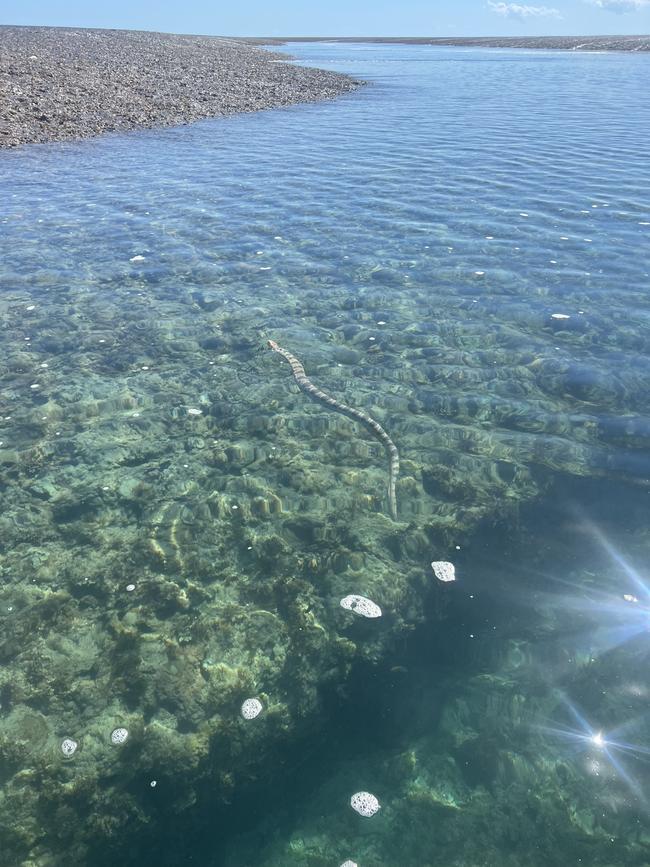
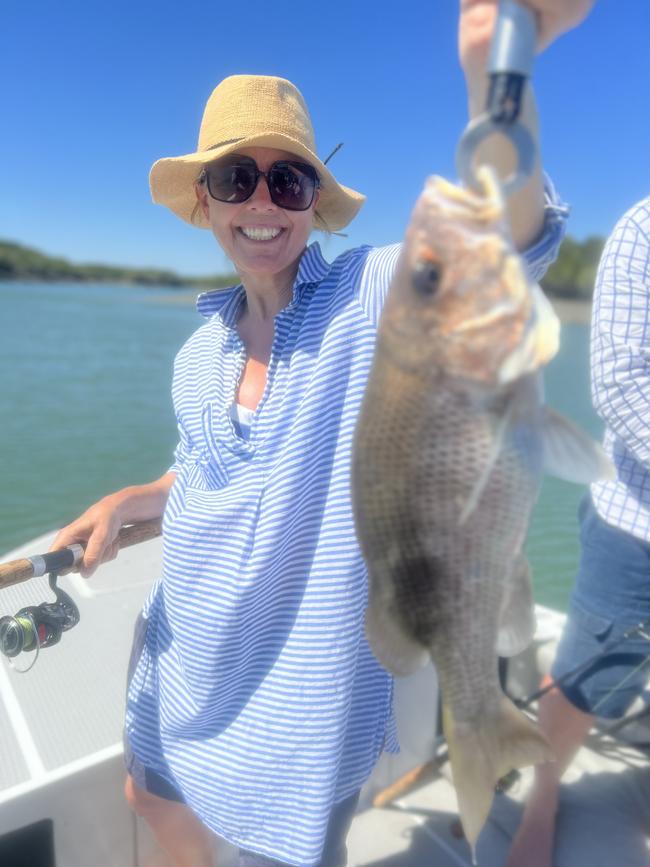
And three hours later, the reef is gone, vanished, disappearing beneath the sea surface. It’s impossible for us to believe it was even there.
The lack of access to the remote Kimberley region has allowed its unique environment to thrive and survive. There’s not a piece of rubbish in sight. Cruise ships are starting to visit the region but they’re few and far between – for now.
We learnt about the first white explorers, the men who navigated this rugged landscape with the most basic of instruments.
Among them were Phillip Parker King, Nicolas Baudin and George Grey, South Australia’s third governor.
King circumnavigated Australia’s coastline three times and was given strict instructions by the British secretary of state to “take care to leave some evidence which cannot be mistaken of your having landed”.
He nailed the brief. Two hundred years later, that evidence is still there.
We visited a giant Boab tree, its fat, shiny trunk inscribed with “HMC Mermaid 1820”. It’s the handiwork of King’s carpenter after they stopped at a sandy bay to repair their badly leaking boat, His Majesty’s cutter “Mermaid”.


Archaeologists believe the Kimberley was one of the first places Aboriginal people occupied, around 60,000 years ago.
They practised their law, dance, hunting and gathering in one of the world’s most stunning locations, making the most of the rich food supply.
We learnt about the Yawijibaya people, a physically superior Indigenous tribe, some as tall as seven feet, who lived on the Kimberley’s High Cliffy Islands for 7000 years.
But in the 1920s their tribe of 300 suddenly vanished – were they all attacked? Was it a giant tidal wave? No one knows. We felt a sense of mystery and intrigue as we observed their homeland.
The beauty of the Kimberley Coast will be forever tattooed in our minds. It is a land of striking contrast.
The towering red cliffs lining the waterways appear like giant Jenga blocks stacked on top of each other. They’re carpeted with lush green trees and bushes, many sticking out horizontally like funny made-up plants in a Dr Seuss book.
It’s mind-blowing to think the rock formations are 1900 million years old. It made me realise our lives are just a tiny speck in time and we must make the most of them.
We’re home now and sorting through the emails. But despite our technology break, everything’s still OK – in fact, it’s better.
There are very few places left in the world where you can’t take a phone call anymore but it won’t be long before we have coverage in every corner, even the remote Kimberley.
I’m so thankful we got there before Elon Musk and his Starlink team did. It’s a gift I’ll be forever grateful for.
More Coverage
Originally published as Jess Adamson: Kimberley Coast is Australia’s most extraordinary, isolated spot




